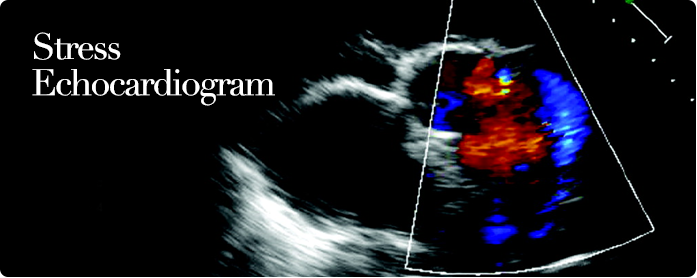| Stress testing is used to detect the presence of coronary artery disease. Stress testing is combined with an echocardiogram to improve the diagnostic accuracy. |
|
| An echocardiogram is performed with the patient at rest. The contracting motion of the heart muscle is observed and areas which do not move at all or do not move as well are noted. |
|
| The patient is then made to walk on a treadmill or pedal on a bicycle until he reaches at least 85% of his maximum predicted heart rate. When the exercise is stopped, the echocardiogram is repeated, taking note of the contracting properties of the heart muscle after exercise and compared to that observed at rest. |
|
| Areas that moved well at rest, but moved more sluggishly after exercise mean that those areas received less blood flow compared to other areas. This is indirect evidence of blockage of the blood vessel supplying that area. Areas that do not move both at rest and after exercise are scarred areas or dead muscle, (caused perhaps by a previous heart attack). |
|
| An abnormal test means that a coronary angiogram should be performed to confirm if blockage is present. |
|





